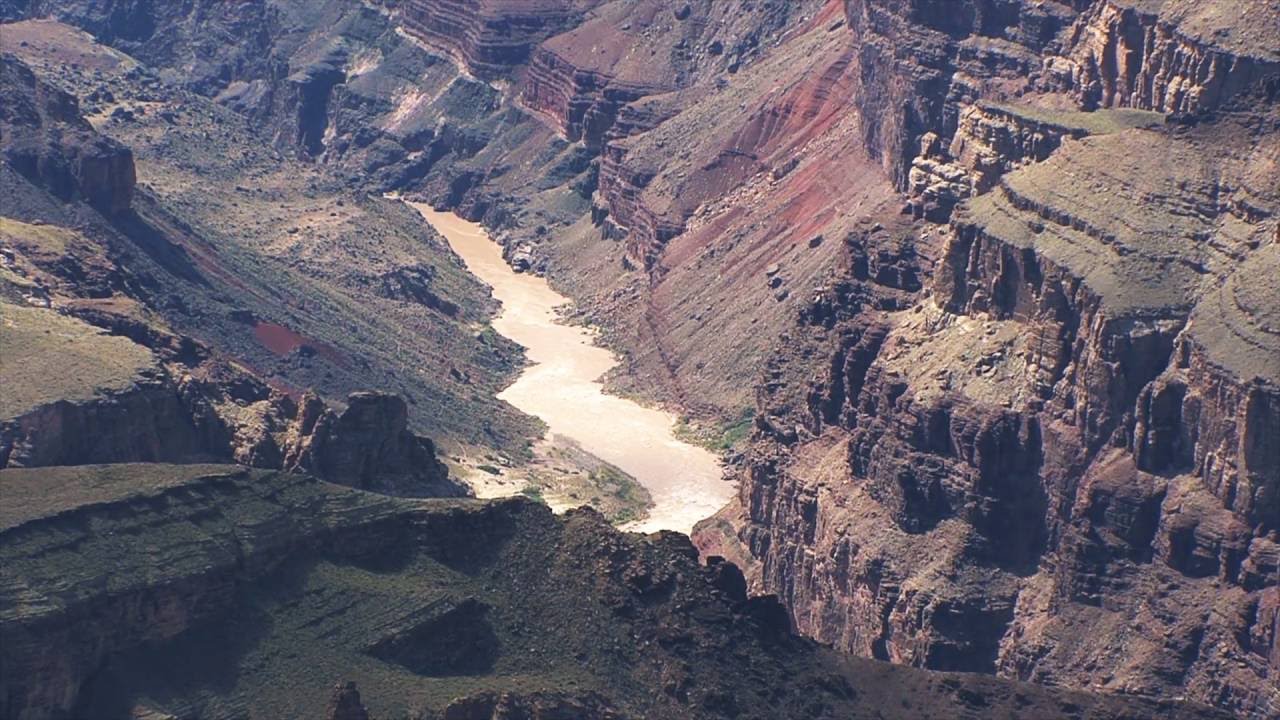A gorge in three days!
This is the pre-publication version which was subsequently revised to appear in Creation 31(3):32–33.

How do you turn a recent flood into a tourist attraction? Simple! Start giving tours of the gorge which that flood created in a matter of days. This Saturday just such a new gorge, Canyon Lake Gorge, which was cut into the ground by local floodwaters in just a few days in 2002, is set to open to the public in Texas for tours. The tours are apparently already booked up for the next six months.1
Canyon Lake Gorge was formed when Canyon Lake in Texas overflowed five years ago, and a torrent of water cut a gash in the ground of what was a nondescript valley covered in mesquite and oak trees. The overflow was caused when the upper part of the Guadalupe River catchment received nearly 900 mm (35 in) of rain in a week. The runoff poured into an already above-normal Canyon Lake, which caused the spillway to overflow. The discharge at the peak of the flood was about 1,900 m3/s (67,000 ft3/s). The spillway’s normal flow is 9.9 m3/s (350 ft3/s). Over the space of three days the rushing water gouged out a canyon 2.4 km (1.5 mi) long and up to 24 m (80 ft) deep. This canyon now sits behind the emergency spillway of Canyon Lake.2
A gorge like this forming so quickly is a surprise to most people. Most people still believe that gorges form by rivers (usually found at the bottom of the gorge) slowly eroding the landscape over millions of years. But this is just one of a number of examples of gorges and canyons that have been created over a very short time by catastrophic flooding (See A canyon in six days! and Canyon creation).
Events such as this have caused geologists who think in terms of ‘long ages’ to change their stories on how canyons, gorges and other similarly eroded rock features, can form. For example, the main hypothesis on how the Grand Canyon formed was that the Colorado River had gouged it out slowly over a period of 50–70 million years (Ma), and this idea held sway for over 50 years mostly without question.3 However, geologists have in recent times drastically revised their timescale down to 6 Ma. Moreover, they postulate that a large proportion of the Grand Canyon eroded through catastrophic dam breaching, which they believe occurred over the last 2 Ma.4
They have acknowledged that only short periods of time were needed to carve canyons such as Canyon Lake Gorge (i.e. canyons which they can’t deny have been formed quickly, because they have observed it themselves). However, they still believe that other canyons, which were not observed while being formed, needed long periods of time to form. Certainly they’ve substantially lessened their estimated ages for some geological features, e.g. the ‘long-age’ timeframe for the formation of the Grand Canyon has been reduced dramatically from 50–70 Ma to 6 Ma. Nevertheless, millions of years of erosion are still invoked to explain the Grand Canyon despite a lack of evidence to suggest it (other than the existence of the Canyon, of course).5 Why do they persist in invoking millions of years when they acknowledge most of the erosion happened through catastrophic flooding? Simply this: millions of years are the foundation of uniformitarian geology.
The news article spells out the significance rather well: ‘Geologic time has a different meaning when it comes to Canyon Lake Gorge. You could say it dates to around the end of the Enron era.’ If this is the case with geological formations we have observed forming, why is the orthodox meaning of ‘geologic time’ (i.e. millions of years) necessary to explain geological formations we haven’t observed forming?
So the challenge left before us is this: are canyons formed by a little water over a long period of time, or a lot of water over a little period of time?6 Considering every event of canyon formation (especially through solid rock) observed by humans has happened with a lot of water over little time, what is more likely for canyons and gorges we haven’t observed forming? It makes perfect sense to apply that same principle to canyons that were not observed while being formed, such as the Grand Canyon. This makes sense both in light of the observations and the Bible: gouges and gashes in the landscape don’t need millions of years of erosion to form.
References
- Roberts, M., Texas set to open new canyon to public, Associated Press, 5 Oct. 2007. Return to Text.
- Flood of 2002, Gorge Preservation Society, 2007. Return to Text.
- Austin, S. (Ed.), Grand Canyon: Monument to Catastrophe, ICR, Santee, CA, pp. 85–87, 1994. Return to Text.
- Foos, A., Geology of Grand Canyon National Park, North Rim, Geology Department, University of Akron, Ohio, accessed 9 Oct. 2007. Return to Text.
- Austin, ref. 3, pp. 83–110. See also Grand Canyon: Monument to the world-wide Flood, Creation 18(2):28, 1996. Return to Text.
- Morris, J., A canyon in six days! Creation 24(4):54–55, 2002. Return to Text.


Readers’ comments
Comments are automatically closed 14 days after publication.